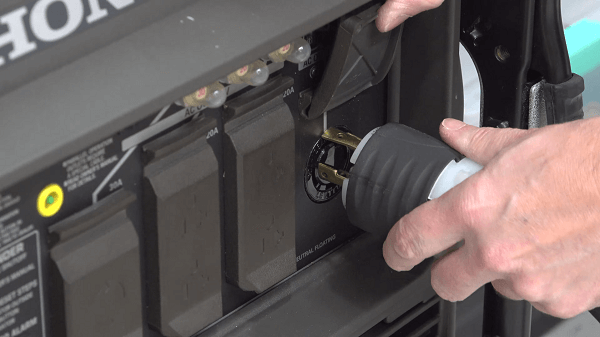Table of Contents
There are many benefits to having a 30 amp generator extension cord, including all recreational and outdoor uses. Their heavy-duty design and construction make them ideal for varying weather conditions.
Generator extension cords can withstand extreme weather and year-round climate changes. They can be used indoors and outdoors and provide users with large amounts of power over long periods.
Whether you are camping, using a generator in your RV, having an outdoor party, or using a generator for emergency purposes, there are ways to keep power flowing and remain safe simultaneously. Having the proper 30 amp generator extension cord is a top priority.
Many retailers carry 30 amp generator extension cords, but the extension cords are not all of the same quality. It is essential to note the quality, length, and thickness of extension cords.
If you’re wondering whether or not you can make your own 30 amp generator extension cord, the answer is yes! Learn how to make a 30 amp generator extension cord here.
Warning!
We don’t recommend doing this on your own if you don’t have prior experience, but if you will be careful electricity can kill.
Anytime you work with electrical wires, it is crucial to do so safely or under the supervision of someone with proper training or equipment.
Use rubber insulating gloves when working with electrical wiring and wire-cutting tools. Turn off power supplies, wear rubber shoes, and ensure that you work in a dry area before cutting into wires. These methods are all excellent practices to keep yourself safe before and after you learn how to make a 30 amp generator extension cord.
Everything You Will Need
It is essential to have the proper tools and materials when working with electrical wires. Not just for your safety, but to ensure you don’t damage the cords.
Tools & Materials
- Two receptacles
- Male plug
- Extension cord (10-gauge)
- 4×4 square box with cover
- Strain relief cord connector or CBG
- Rubber gloves
- Screwdriver
- Pliers
- Scissors
- Electrical tape (optional)
1. Opening holes on the box
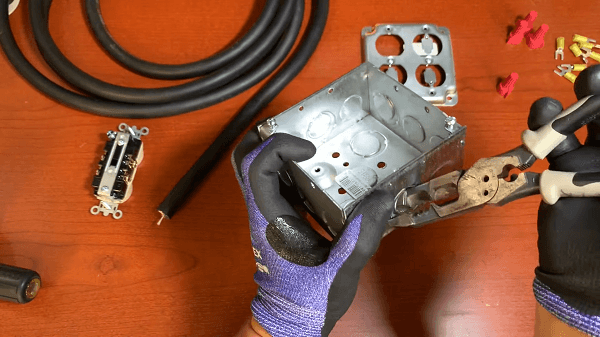
Use a pair of electrical pliers to puncture a hole in the square box. Use a good pair of electrical pliers with built-in wire cutters to save time and money when purchasing new tools. Puncture the hole as it will be essential for stabilization later. Remove the screws using the screwdriver so that the box top is open.
2. Stripping the cord
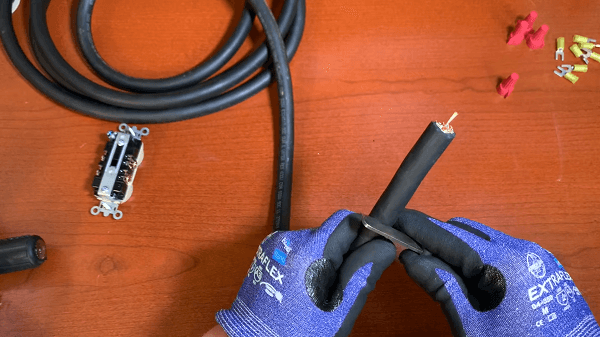
Here you will use the pliers to remove or strip the cord. From the end of the cord, measure approximately 2.5 inches up and mark the cord. Begin to strip the cord with the pliers. Be careful not to cut or damage any of the internal wirings, or the cord will not function properly.
3. Cutting the extra insulation
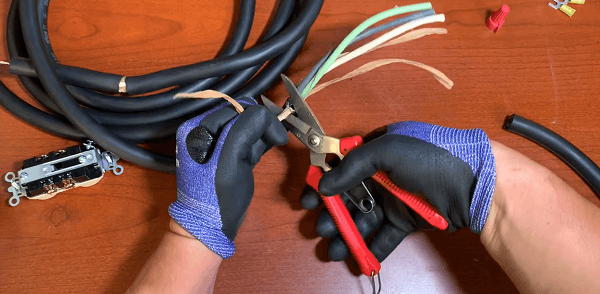
(Note: these heavy-duty 30 amp generator extension cords have an additional thick layer of insulation like other outdoor-rated extension cords.)
In this step, you will use the cable cutters ( or scissors) to cut the insulation from the area of the cord that you stripped with the pliers in step 2. Do not eliminate the hot, neutral, or ground wires.
4. Setting the CBG
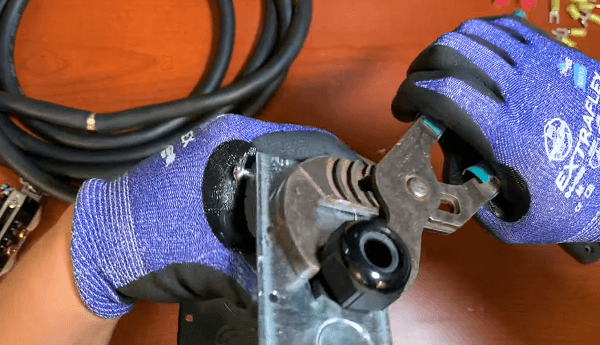
Once you put the CBG or the strain relief cord connector on the hole, use the channel-lock pliers to lock the object in place and keep it from moving.
5. Securing the CBG

After setting the wires in the box, fully lock the CBG.
6. Stripping the wires
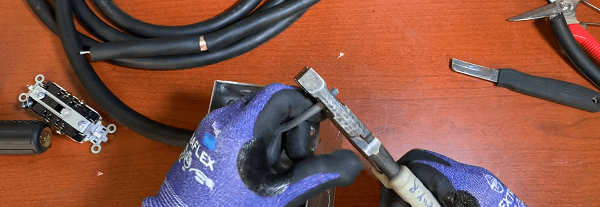
Use the pliers with strippers to strip the wire, being cautious not to remove too much material.
7. Grounding the wires

Cut the extra wire to create two grounds, allowing one for each receptacle and from the ground to the generator. Next, attach the other wire to the box. If you use wire nuts for this, make sure to tighten them before pulling the wires to check for good contact.
8. Connecting the wires
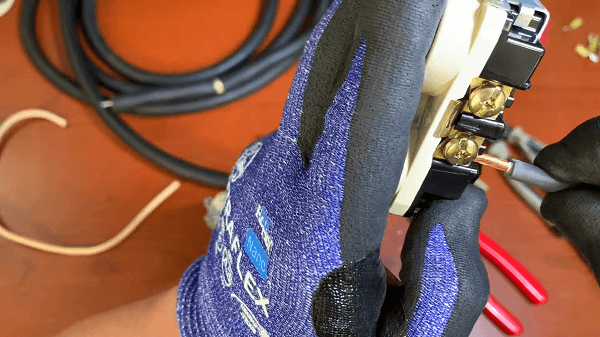
As with other forms of electrical work, twist the wires together before connecting them. Tighten the wires with the screwdriver and make sure everything is in place. Some people use electrical tape as an extra precaution when holding all the wires in place.
9. Connecting to the box

Attach the receptacles to the box lid. Then connect the lid to the box, and make sure the screws are tight.
10. Take the male plug apart
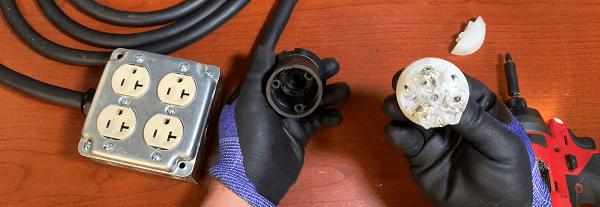
Take the male plug apart and make sure you don’t lose any of the parts.
11. Wires on the other end
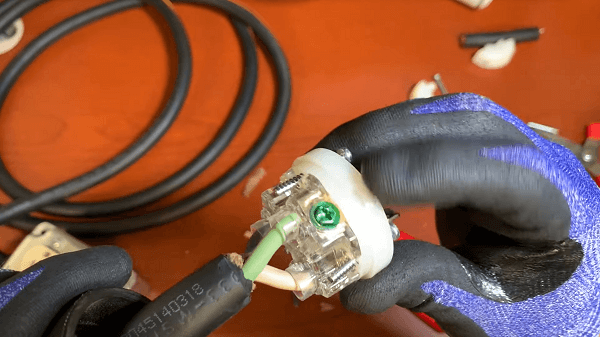
Similar to the first side you need to remove the jacket from the cable and then strip the wires. Then you put the bottom part of the connector on the cable, push it back, and connect the wires to the plug.
12. Connecting the plug on the other end
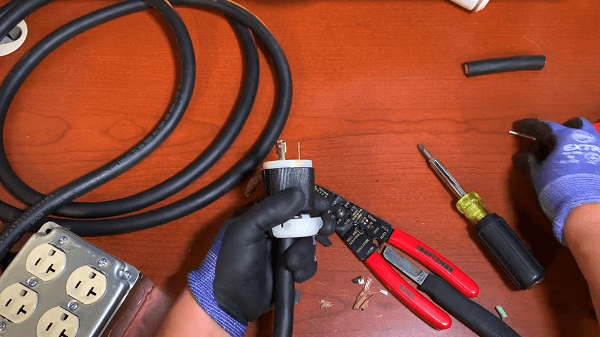
Tighten the screws on the end of the connector. Connect the bottom of the plug to the top, and add the two plastic pieces on the bottom.
Congratulations! You have successfully created your own 30 amp generator extension cord!
Extension cord without a box
The cord above has a male plug on one end, and a box on the other. However, if you plan on making a cord with a male plug on one end and the same female plug on the other, this video is a great tutorial.
How To Test an Extension Cord
If you are unsure if your extension cord is working properly or whether or not it’s become unusable, there are ways to test it safely.
Do some thorough inspections of the cord. Check for breaks or tears in the jacket, and look for cracks or frayed areas. Also, check for faulty trigger locks and missing or bent prongs. These are all visible signs that could mean your extension cord is unusable.
If you see no signs of wear and tear on your extension cord but are still unsure if it’s properly working, use a multimeter set with the resistance times one. The meter should read 0 ohms if the extension cord is functional and in good working condition.
The multimeter will have fluctuating, sporadic numbers if the cord is bad. In that case, throw the extension cord away.
How to Correctly Use an Extension Cord
These are the steps to correctly use an extension cord:
- 1. Crack
Ensure the cord is safe and good to use with no cracks or frays.
- 2. Make sure its tight
Plug the cord into the outlet and make sure it is fully plugged in. The plug should be snug into the outlet. (Note: if the plug is loose, the outlet may need to replacement.)
- 3. No water
Keep extension cords away from water unless you know they are weatherproof.
- 4. Turn it on
Turn on the switch for the power source.
- 5. Marry them only if they go together
If you are connecting more than one extension cord, ensure all the extension cords are in working condition and marry the plugs with the corresponding cord’s end. Male and female ends will connect appropriately and should not be forced together.
- 6. Save them
When you are done using the extension cord, it is always safest to unplug the cord by the plug. Not by pulling the cord. Doing this will also prevent you from accidentally bending or breaking the prongs in your extension cord plug.
Properly handling your cords can keep them in great working condition longer, thus saving you money down the road.
Frequently Asked Questions
These are common questions on how to make a 30 amp generator extension cord. Including extension cord lengths, gauges, and wattage.
What gauge extension cord do I need for 30 amps?
Ideally, a 10-gauge extension cord is what people use for any 30 amp circuits. The larger 10-gauge cords help prevent overheating and potential fires from long-term or extended use. They also produce more power than some of the thinner cord models.
What gauge extension cord do I need for my generator?
10-gauge is the most commonly used size extension cord for generators. However, generator extension cords come in a few different gauge sizes, including 8, 10, 12, 14, and 16. The thicker the cord, the more power you can expect to pull through it.
How long can a 30 amp generator extension cord be?
The lengths of 30 amp generator extension cords vary, but they are generally between 15 and 30 feet. Some run longer but should not exceed 100 feet. However, if you plan to use more than one extension cord, you can extend the distance.
For safety purposes, some people choose a longer cord to keep the generator at a distance from people inhaling exhaust or fumes.
How many watts can a 30 amp generator cord handle?
A 30 amp generator cord can support up to 7500 watts. The voltage of a 30 amp generator cord also produces up to 250 volts.
Can you connect two 30 amp generator cords together?
While you can run extension cords in a series, certain models of 30 amp generator cords have specific ends for power and utility sources. These types of extension cords require male and female connectors to work.
Is it cheaper to make your own extension cord?
It depends on whether or not you already own the tools and materials needed to make your own 30 amp generator extension cord. If you have to buy each item on the tools and materials list, it could add up to more than the cost of a new extension cord.
Prices for 30 amp generator extension cords vary based on the length, maximum wattage, and company brands.
Making A 30 amp Generator Extension Cord
Extension cords can be used for many reasons – knowing what type of extension cord you need is the first step. Safety is a priority when dealing with powerful 30 amp generator extension cords, but so are power and consistency.
Follow the steps above to make a 30 amp generator extension cord at home without an electrician! Take time to ensure that you follow each step and prioritize your safety above all else.
The costs of making an extension cord may be worth the effort. Always do your research first after learning how to make a 30 amp generator extension cord.

